Cactus in the Midwest – Eastern Prickly Pear Cactaceae ‘Opuntia humifusa’
Growing Cactus in the Midwest
Years ago I met up with a local hosta addict who asked me to drop by his garden and breeding laboratory. While walking past giant patches of hosta, I happened upon an equally giant patch of Eastern Prickly Pear Cactus. “WHOA!” I shouted. “Cactus in Illinois? Do you dig this up?” The answer: YES! You can have amazing cactus growing in your garden in the Midwestern United States and no, you do not have to dig them up. These native cactus plants survive our harsh winters.
There are two different varieties; Opuntia Macrorhiza (Big-Rooted Prickly Pear) and Opuntia humifusa (Eastern Prickly Pear). Both have gorgeous flowers and are a must have for the collector of native plants from the region. Better yet you can cook with them, making recipes that range from jellies and margarita’s to fried tacos. Simply cut off the spines, clean, and follow a recipe. I have found lots of recipes online for them.
My biggest challenge with the cactus is weeding around the plants. Every time I make the attempt without gloves on I end up with spiny cactus injuries. My family has to pull out the tweezers and do an emergency cactus-ectomy on me. There are long spines and small spines dependent upon where you touch the plant. I was outside weeding this week without gloves on and you can see my most recent injury just below my very dirty-from-the-garden thumb (right). OUCH! This is why I wrote an article for my Better Homes and Gardens Blog recommending gloves. Apparently I forgot to practice what I preach.
Each native perennial prefers full sun and a dry location – it is a great drought tolerant plant. (Here’s a list of a few of my favorite drought tolerant plants – LINK). It seems to thrive in poor soil and loves rocky and sandy conditions. Bees adore this little cactus. Each plant is an interesting blue-green and is no taller than 3″ tall. They are made up of several levels of flattened pads starting with a single pad on the ground which is around 10″ long and 7″ across. Pads break off, fall to the ground, and are spread vegetatively forming large colonies. Yellow flower buds form on top of the pad and are around 2″ wide and gorgeous, but each flower only blooms for a single day and has no scent. When the flower drops, a fleshy green fruit develops.
Lots of independent garden centers sell the cactus throughout the Midwest and it is immensely easy to propagate from a dropped cactus pad, so makes a delightful pass-along plant from garden friends. Even with my injuries, I love this plant and think it is a surprise of native plant interest in a Midwestern garden.
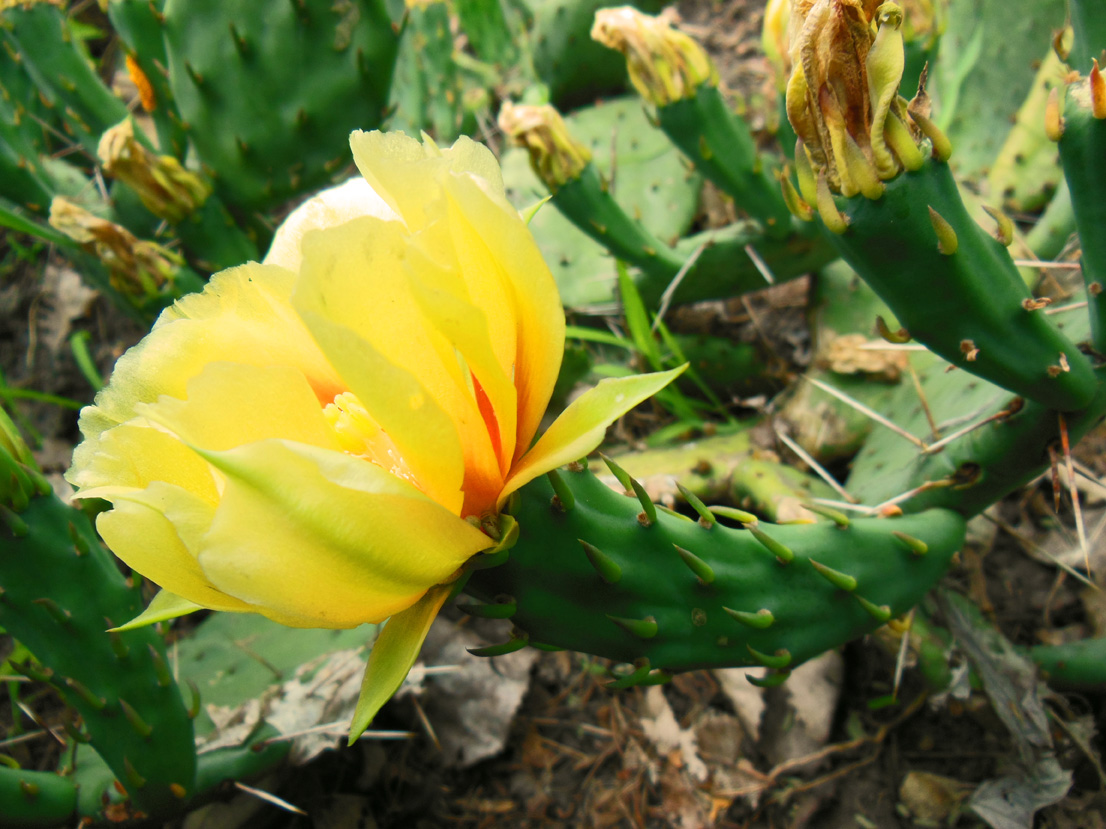
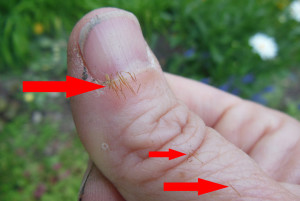
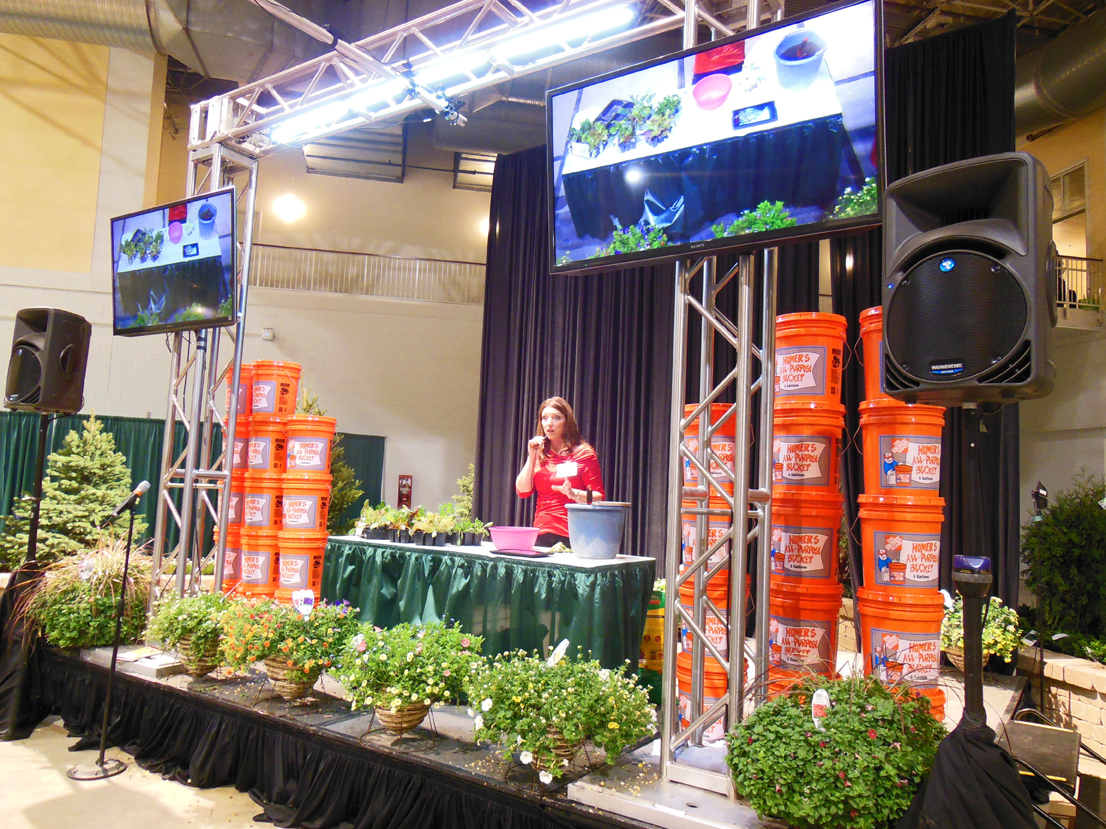
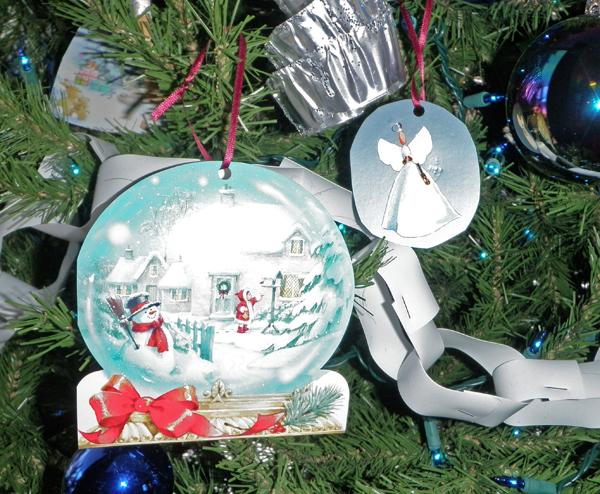
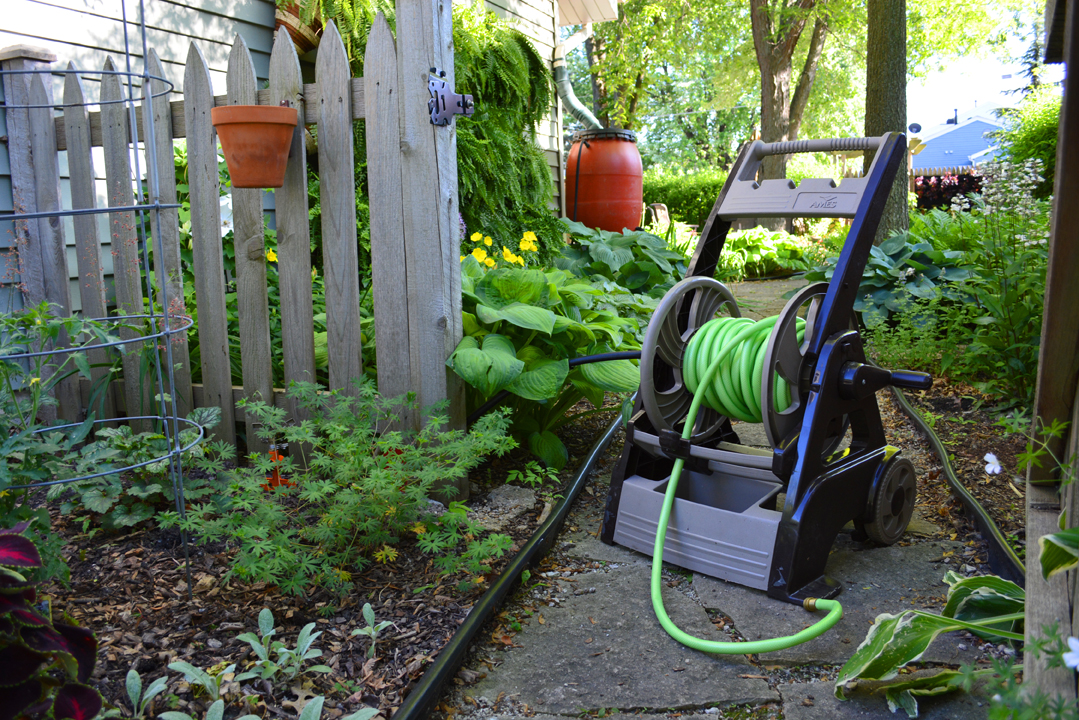
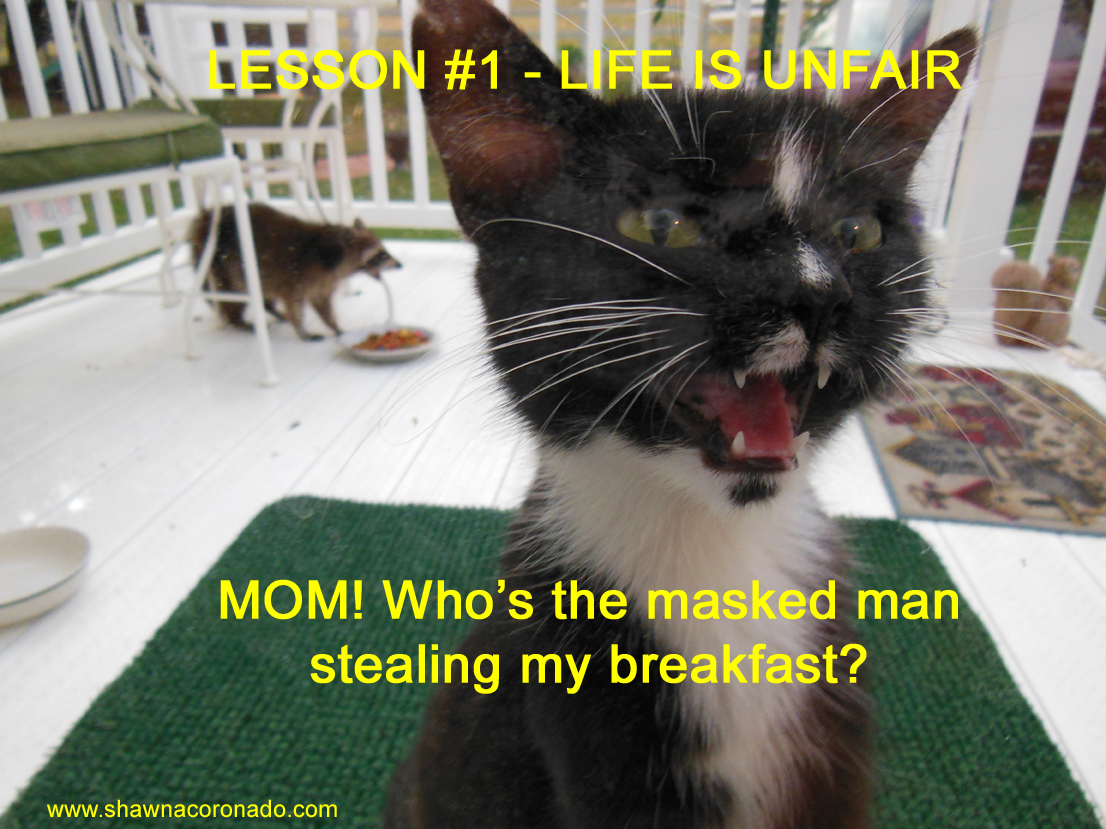

I have this in my zone 5 garden and they are absolutley gorgeous!
Hi Carol!
Definitely an awesome plant! 🙂
Shawna
The Prickly Pears are wonderful plants. While I have not found a perfect pair of gloves to work around my 20 different species a folded piece of cardboard can be used to grip a pad or plant if you are potting or transplanting a plant to protect you from the glochids. One of my customers made me Prickly Pear jelly it is wonderful
Great idea – thanks!
Shawna
The HEALTH benefits of prickly pears ( yeah, I know. I’m the LAST person to be talkin’ about HEALTH! ) can’t be overstated! My blood sugar’s now in the “normal” range, my blood pressure’s good, all due to cactus pears and pads. I been ordering red prickly pear powder for about a year now. I’ve also been juicing nopal cactus pads, which get you a cup of membranous “goo” that taste a lot like cucumber.
Now, I live on a piece of property ( no lawns, all asphalt – at least it has a large shade tree – yeah, it ain’t all that classy. ), and on that piece of property is a great big hedge of cactuses! These produce thousands of little red and violet colored prickly pears! Now I no longer have to buy the red powder. But I gotta WARN you, you must beware of all those fine, hair-sized nettles! Man, those things are DESIGNED to hurt!!! And I do mean HURT!!!
But once you’ve held the prickly pears with tongs and special gloves, and with tweezers you’ve cautiously “gouged out” all those “nettle-nipples”, you’re good to go!!!
P.S. HEY HEY HEY!
I’m so excited to grow these in my Chicago garden! Thanks so much for this post.
You can do it — plus they’re edible. Definitely a double treat!!!